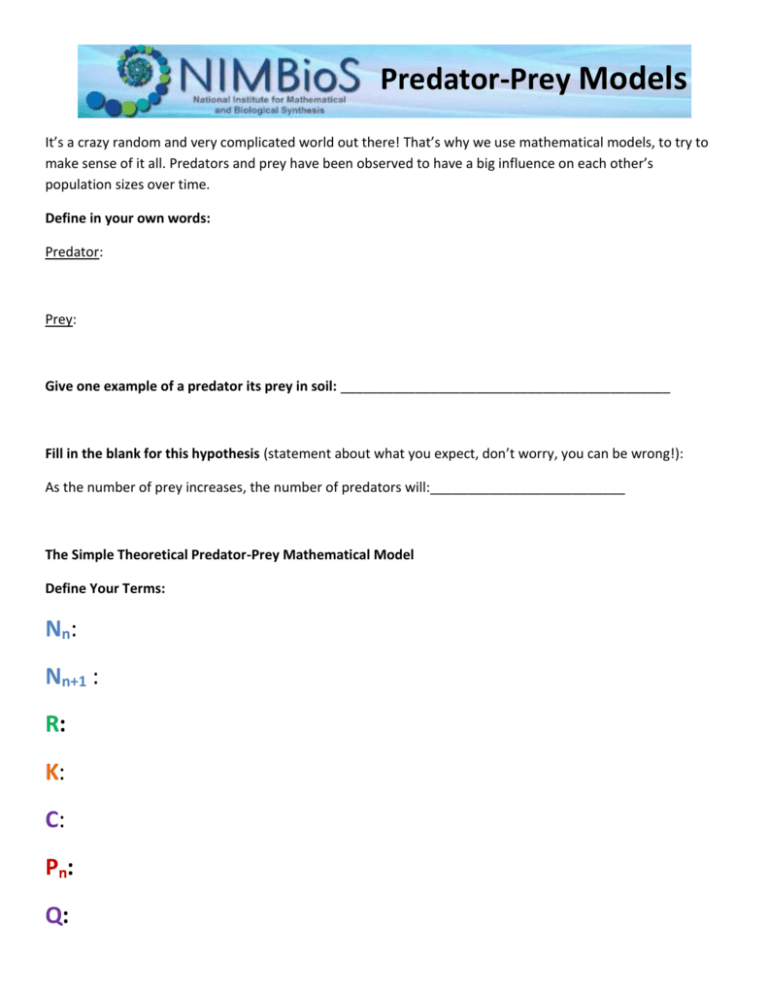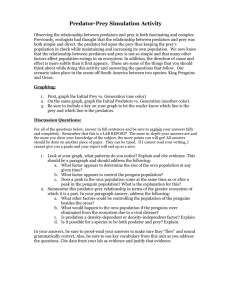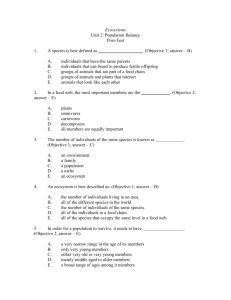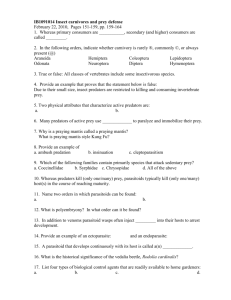docx - NIMBioS
advertisement

Predator-Prey Models It’s a crazy random and very complicated world out there! That’s why we use mathematical models, to try to make sense of it all. Predators and prey have been observed to have a big influence on each other’s population sizes over time. Define in your own words: Predator: Prey: Give one example of a predator its prey in soil: ____________________________________________ Fill in the blank for this hypothesis (statement about what you expect, don’t worry, you can be wrong!): As the number of prey increases, the number of predators will:__________________________ The Simple Theoretical Predator-Prey Mathematical Model Define Your Terms: Nn: Nn+1 : R: K: C: P n: Q: For the Prey: 𝑵𝒏+𝟏 𝑵𝒏 = 𝑹 (1 − ) 𝑵𝒏 + 𝑵𝒏 − 𝑪𝑵𝒏 𝑷𝒏 𝑲 For the Predators: 𝑷𝒏+𝟏 = 𝑸𝑵𝒏 𝑷𝒏 Test your hypothesis, and show your work! Assume: K=100; R=1.5; Q=0.02; N0=50; P=0.20; C=3 Table It (some are done for you): Time Step (n) 0 1 2 3 4 5 6 7 8 9 10 N (Prey Population) 50 P (Predator Density) 0.20 54.6 47.6 0.27 0.29 49.2 55.7 0.21 0.21 Graph It: Don’t forget to create a legend and label your axes Questions: Was your hypothesis correct? Explain. Which population density peaked first, the predators or the prey? It would seem that the prey population has reached a second peak (we’d have to keep calculating to be sure). Will it peak as high the second time as the first? Why or why not? What would be an easier way to calculate this model than by doing all the work on paper and with a calculator? Describe another situation where you might be able to develop and use a mathematical model:











